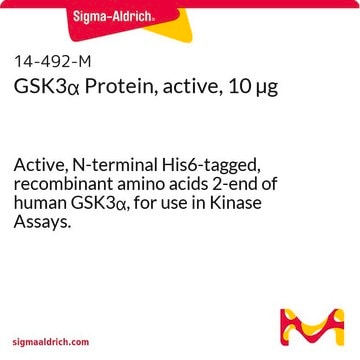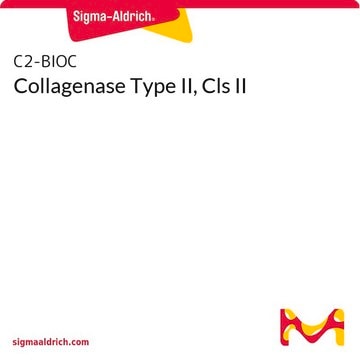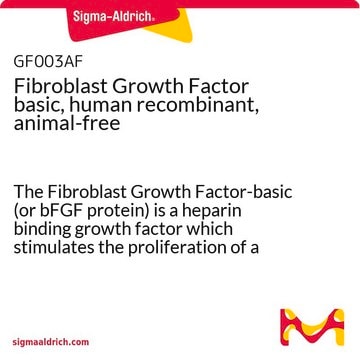SRP5172
Catenin β, GST tagged human
recombinant, expressed in baculovirus infected Sf9 cells, ≥70% (SDS-PAGE), buffered aqueous glycerol solution
Sinónimos:
CTNNB, FLJ25606
Seleccione un Tamaño
321,00 €
Seleccione un Tamaño
About This Item
321,00 €
Productos recomendados
origen biológico
human
recombinante
expressed in baculovirus infected Sf9 cells
Ensayo
≥70% (SDS-PAGE)
Formulario
buffered aqueous glycerol solution
mol peso
~115 kDa
técnicas
activity assay: suitable
solubilidad
water: soluble
idoneidad
suitable for molecular biology
Nº de acceso NCBI
aplicaciones
cell analysis
Condiciones de envío
dry ice
temp. de almacenamiento
−70°C
Información sobre el gen
human ... CTNNB1(1499)
Descripción general
Aplicación
Acciones bioquímicas o fisiológicas
Forma física
Nota de preparación
Código de clase de almacenamiento
10 - Combustible liquids
Clase de riesgo para el agua (WGK)
WGK 1
Punto de inflamabilidad (°F)
Not applicable
Punto de inflamabilidad (°C)
Not applicable
Elija entre una de las versiones más recientes:
Certificados de análisis (COA)
¿No ve la versión correcta?
Si necesita una versión concreta, puede buscar un certificado específico por el número de lote.
¿Ya tiene este producto?
Encuentre la documentación para los productos que ha comprado recientemente en la Biblioteca de documentos.
is associated with triple-negative phenotype
but not with CTNNB1 mutation
Filtros activos
Nuestro equipo de científicos tiene experiencia en todas las áreas de investigación: Ciencias de la vida, Ciencia de los materiales, Síntesis química, Cromatografía, Analítica y muchas otras.
Póngase en contacto con el Servicio técnico








